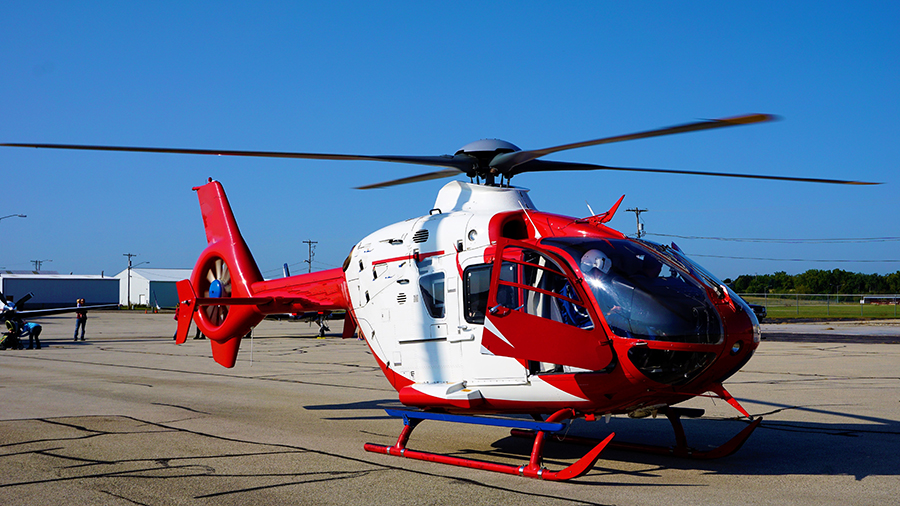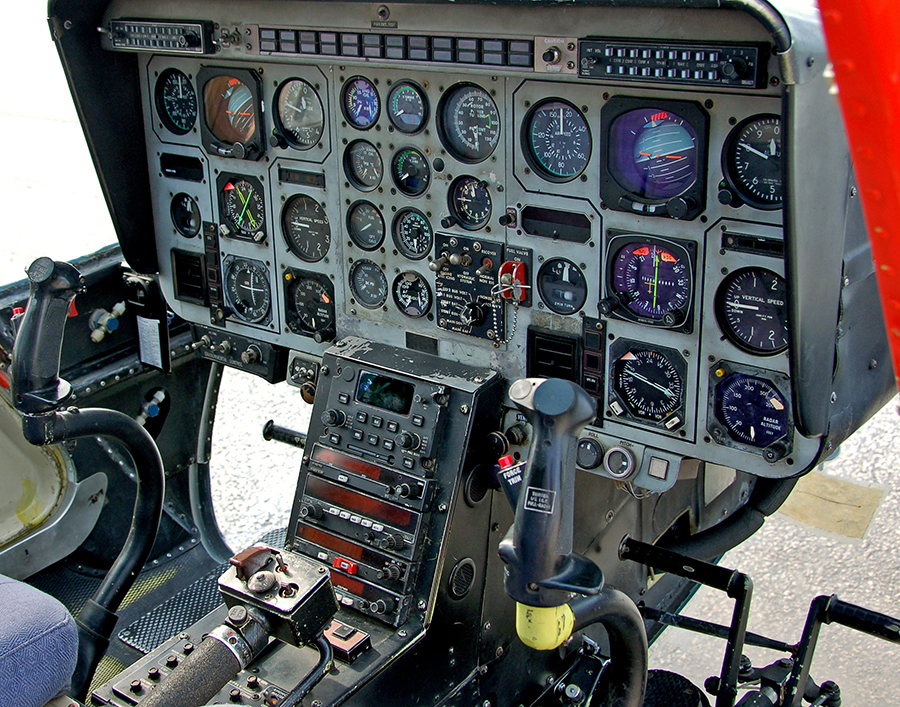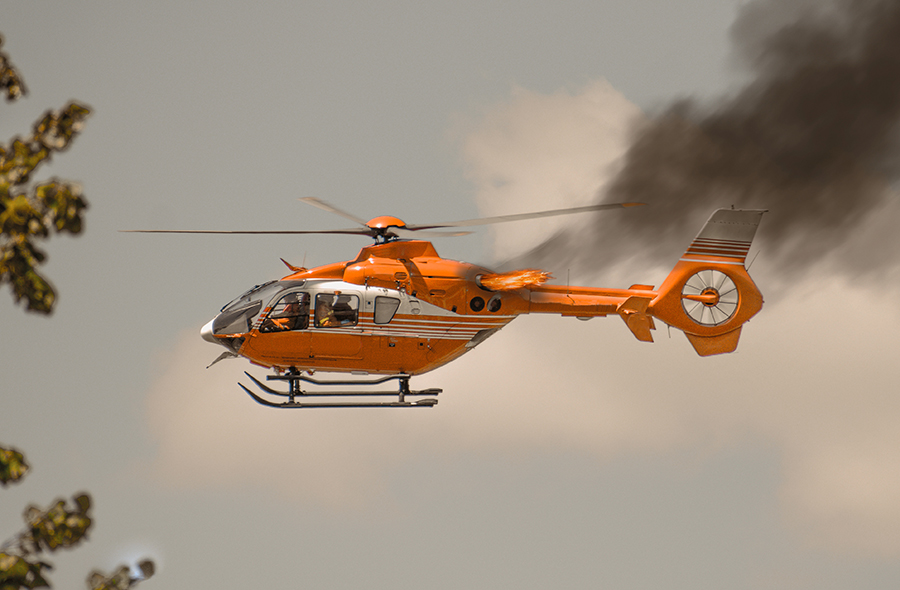Dealing with emergencies in the air is difficult and frightening, whatever type of aircraft you fly. Whether caused by mechanical failure, electrical problems, bad weather, or anything else, most of us would much sooner be on the ground when there is any serious problem with a flight. Any pilot who has ever dealt with a real emergency wholeheartedly agrees with the well-known aviation saying: “Better to be on the ground wishing you were in the air, then in the air wishing you were on the ground”.
I have found out myself just how frightening it is to have to deal with an emergency, a couple of times in my flying career. Many years ago, as a fairly low-hours helicopter pilot, I had just departed from a small airfield to fly back to my home base. Leveling off from the climb-out and making a routine check of the instruments, I suddenly realized that a light was on which definitely shouldn’t have been. I can still remember the instant that I froze in shock and disbelief – this just couldn’t be happening, and what should I do about it? Within probably seconds – though it felt like much longer – my mind unfroze, and I began to run through the possible causes. Whatever the cause, I realized that I ought to land as soon as possible and sort it out and that there was an airfield just behind me. So I called them on the radio and landed.
The second time I had to deal with an emergency for real was a few years later. I was on a cross-country flight, and ten minutes after leaving my small home airfield, the generator light came on and stayed on. Again, I found that I froze for a moment. Then I calmed down and realized what it was. I knew that it wasn’t an immediate emergency, but flying over hills to a major airport with a risk of complete electrical failure just wasn’t a good idea. I called my home airfield and returned.
So how do we deal with emergencies in a helicopter? Let’s take a look at a few general points that are specific to helicopters, then go into some more details.
Specific Helicopter Points Relating To Emergencies In Flight
Helicopters can land almost anywhere. This means that, unlike fixed-wing pilots, helicopter pilots do not need to look for an airfield, or even a very large field, on which to land in an emergency. Almost any flat area will do, even a flat roof if you are in a city and nothing better is available. So helicopter pilots think rather differently from their fixed-wing colleagues when it comes to dealing with emergencies. And if there is a problem in the air, helicopter pilots are far more likely than fixed-wing pilots to land and sort things out on the ground, rather than carry on flying.
Things can go wrong very fast in helicopters. Whereas in an airplane, should the engine fail, you have a few minutes to sort things out in the air, in a helicopter you have to decide what to do in a few seconds. So you need to be ready to react really quickly in a helicopter, should you need to. So what does all of this mean in practice?
What Emergencies Are There In Rotary Flying?
Of course there are an infinite number of possible emergencies. But here is a list of the most likely ones
- Engine failure
- Tail rotor failure
- Engine fire
- Radio failure
- Governor failure
- Warning light indicating a shortage of fuel
- Other warning lights
- Jammed controls
Dealing With Helicopter Emergencies
So how do you deal with any of the above emergencies? Leaving out the details, there are two main ways. The Robinson R22 Pilot’s Operating Handbook talks about “Landing Immediately” and “Landing as soon as practical”. All emergencies can be fitted into one of these categories, depending on how serious they are.
Land Immediately
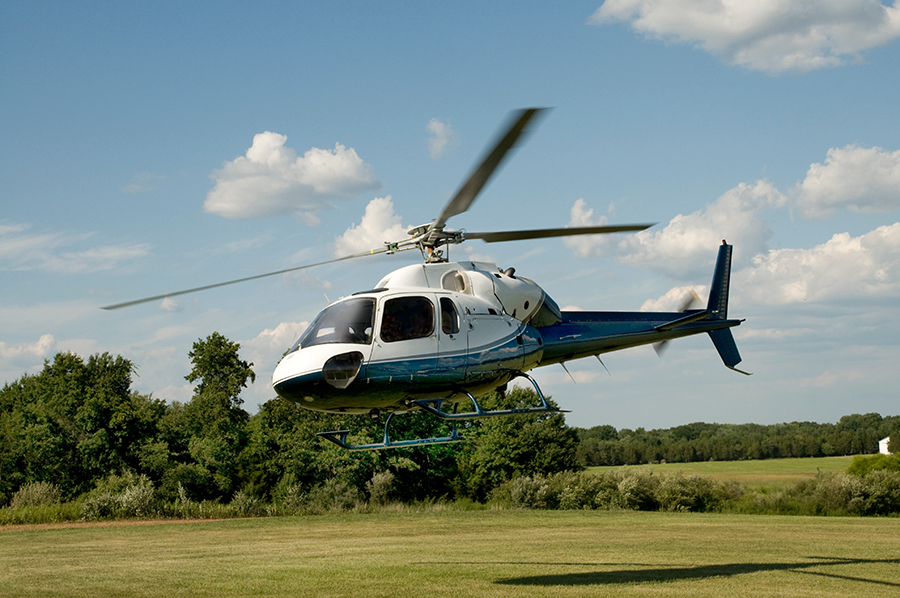
You should land immediately if any of the following occurs…
- Engine Failure
- Engine Fire
- Shortage of fuel
Landing immediately means putting the helicopter into autorotation if necessary, descending, and landing on the nearest flat surface. It should be obvious why you would do this in the event of engine failure or engine fire, but what about a shortage of fuel? Well, most fuel warning lights come on when you have about five minutes worth of fuel left. This just about gives you time, in the cruise, to put your helicopter into a descent and land. If you spend more time than that, you are likely to be dealing with an engine failure too.
Land As Soon As Practical
Land when you can, probably at an airfield, if any of the following occurs…
- Tail rotor failure
- Radio failure
- Governor failure
- Warning lights coming on
- Jammed controls
None of these are immediate emergencies…but they could be if you leave things for too long. But you don’t need to rush, and indeed, in the event of situations such as tail rotor failure and jammed controls, actually landing could be difficult. In fact, you may not be sure what to do, and it could help to have someone to talk you through a safe way to land. So flying to an airfield, putting out a Mayday call, and getting help, is probably more important than putting the helicopter on the ground immediately.
Weather Emergencies
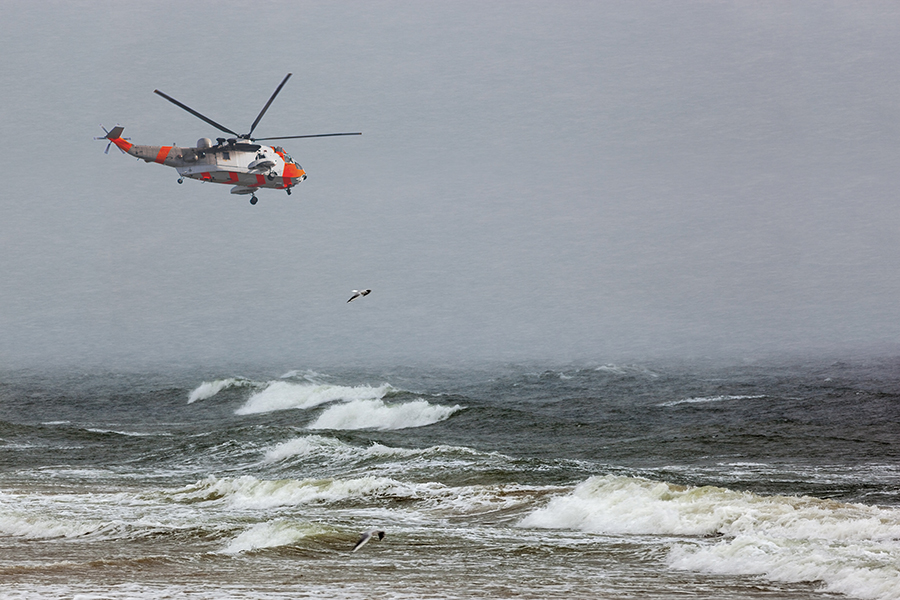
Weather emergencies really need a separate section for themselves. Unexpected bad weather can turn a normal flight into an emergency quite quickly. When it came to dealing with unexpected bad weather, I was not taught that much during the PPL(H) course. I was simply told that if the weather was too bad then I should land in a field. Yes, but how bad is too bad to fly? What sort of field should I land in? And most importantly, at what point should I decide? A low-hour pilot flying in marginal weather is under stress, and it’s far easier to make that kind of decision if you’re given guidelines in advance. Perhaps you should be told that if you have to fly below 500 feet, or at less than 60 knots, it’s time to find a landing site. This was suggested to me at some point in my flying training; I think it’s good advice, and I now try to pass it on to all my students.
Another good tip about looking out for weather emergencies was given to me by a friend who flew the whole length of Britain in a helicopter. If the weather was less than perfect, he would keep an eye open all the time for good landing sites. This meant that if it worsened, he knew where to head for when he turned back. An excellent idea, since landing in the middle of nowhere in bad weather might be better than flying in it, but not that much!
Also, if you do have to land far from roads and human contact, how many of us carry extra warm clothing, plus food and drink? Surely we should, and I now make sure I have water and energy bars with me at all times when I’m flying.
Learning About Emergencies
Of course, all pilots practice emergencies frequently, both in training and afterward. But often, this only applies to a few emergency situations, such as engine failure and tail rotor failure. Many pilots have never learned what to do if the controls fail, or if the RPM governor stops working. And what about weather emergencies? So if this applies to you, it could be worth getting some extra training on what to do if one of these occurs. It is much better to have a good idea of what to do well in advance.
Decision Making In An Emergency
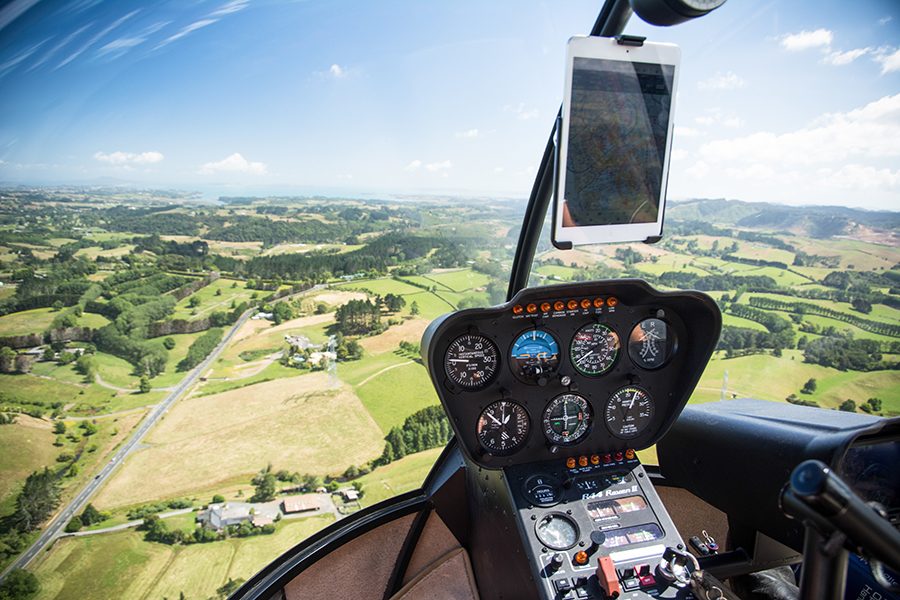
Real emergencies are very different from practice ones, something which is often forgotten. This is for one basic reason: they leave out the pilot’s state of mind. If something really goes wrong in the air, the first thing the pilot will need to do is to deal with what’s going on in his or her head! We all like to think that we’d react coolly and calmly to an emergency, and maybe a few people do – but most of us don’t. Freezing in shock and disbelief is not uncommon. Despite all the training we do for emergencies, they always come as a complete surprise. None of us actually expect anything to go wrong when we are flying; we trust our aircraft. So when something does happen, our first reaction may well be shocked, followed closely by denial: this just can’t be happening! This means that at the very time when you really need to be thinking clearly, the thought may become extraordinarily difficult. Someone described it to me as feeling as though their brain was made of cotton wool, and most of us who have been in any kind of aerial emergency, however minor, know exactly what that means.
The confused state of mind described above is obviously not conducive to good decision-making – and good decision-making is precisely what is required in an emergency. It is all very well to have practiced for emergencies, but the real thing is never the same. That engine failure after take-off is not in the same place as it was when the instructor pulled the throttle the last time you did it, and anyway, you knew you had an engine really. That bad weather which is closing in so fast is a lot scarier than the instructor telling you to act as though there was a cloud at 500 feet. And that light, noise, or vibration isn’t even something you remember learning about, so how do you even know how to deal with it? You’re alone at 2000 feet or less, and this is for real. Fear is normal in such situations. If you weren’t scared, you wouldn’t be human.
So if you can, it is a good idea to do some practice emergencies with an instructor. This is not quite the same as the real thing, but it is fairly close. Personally, I had never practiced any emergency, other than engine failure when I got my helicopter Private Pilot’s License. Soon afterward I went on a Robinson Safety Course – a day workshop specifically designed for R22 and R44 pilots – in which we went over some other possible situations. During this course, I was shown how to fly after the failure of the rotor RPM governor, how to control yaw using the throttle if I had stuck pedals, and how to respond to a number of other nasty situations. I realized how useful all of this was, and some time afterward I decided to do more flying with an instructor, specifically to learn to respond to even more emergencies. I recommend this sort of thing for all helicopter pilots.
Being Ready For An Emergency
There are a few things you can do when flying to ensure that if any emergency situation occurs, you are reasonably ready for it….
- Practice emergency procedures regularly
- Become familiar with the helicopter you fly and what the warning lights and horns all signify.
- Keep an eye on the weather at all times when flying
- Keep a lookout for good landing sites that you could return to if necessary, eg hotel car parks or large fields near a road
- Carry emergency food supplies, water, extra warm clothing, and perhaps a spare handheld radio whenever you fly.
Also, I remember being told early on in my training that to ‘land immediately’ was never wrong. If in doubt, my instructor said, get the aircraft onto the ground. You can sort out the problem later, and if all is well, take off again. The fact that helicopters can do this so easily makes all the difference. Indeed, some helicopter pilots plan in advance for this sort of thing, and I knew one who carried a couple of bottles of wine which he would give to any landowner in whose field he landed, as a kind of peace offering. He tended to do this most often in the case of bad weather, but it could equally apply to any other emergency.
Conclusion
This ability of helicopters to land almost anywhere means that I feel that in many respects they are safer than fixed-wing aircraft. I have flown both, and I am certainly happier in a helicopter purely because I know that if something goes wrong I can easily get it onto the ground. I know that this opinion goes against the general view of many pilots, who perceive helicopters as being much more dangerous, but I really don’t agree. Overall I would prefer to be in a helicopter should anything go wrong in the air, since rotary pilots can just land if necessary. Of course, you need to decide how quickly to land; I once heard that more accidents are caused by helicopter pilots panicking, throwing their helicopter into autorotation, and getting it wrong, than by real engine failures. But a sensible, careful, precautionary landing is usually the best response to most helicopter emergencies.
I think this ability of helicopters to land almost anywhere is the main reason why there are so few accounts of rotary pilots flying damaged aircraft or struggling through horrendous weather to reach somewhere safe. While their fixed-wing colleagues may be doing this, helicopter pilots with a similar problem are safely on the ground, perhaps having to deal with an irate landowner or a nervous passenger, but neither of those is likely to kill you. So this difference in dealing with emergencies is one important reason why I would definitely prefer to fly helicopters.
So overall, please don’t worry too much about helicopter emergencies. They are something you need to know about, but that is all.
